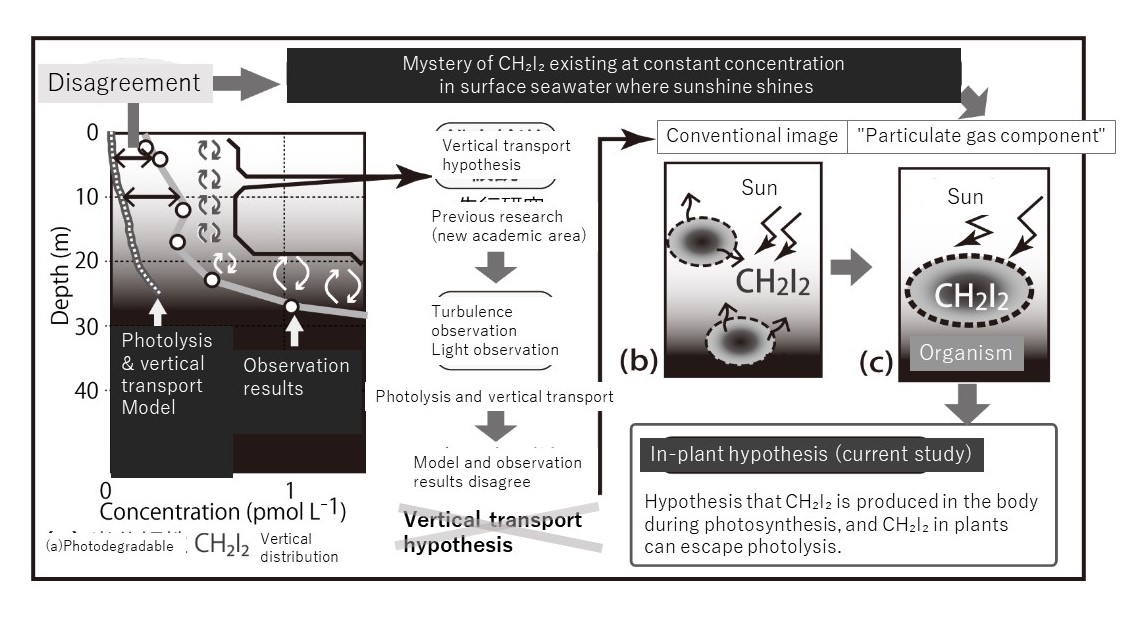Existence of diiodo-methane near the surface layer is
also a complete mystery.
Diiodo-methane is easily decomposed
by the blue-wavelength light of the sunlight. Hence, it is a mystery why diiodo-methane is constantly present in
the ocean layer where light can reach.
It was initially believed that
diiodo-methane accumulated in the subsurface layer where the light was weak and
reached the surface layer via vertical mixing. Subsequently, it maintained the
surface layer concentration.
Therefore, we decided to confirm this
by simultaneously investigating three aspects: “turbulence measurements”
evaluating vertical mixing in detail, “light observations” analyzing the depth
of light penetration, and diiodo-methane measurements.
(We worked on this as an open call for
participants for the establishment of marine mixing studies (representative:
Professor Yasuda Ichiro) and cooperated with Professor Yasuda’s group and
Professor Hirawake’s group)
Results showed that vertical mixing cannot maintain the diiodomethane concentration
in the ocean surface layer. Hence, we formulated various hypotheses
and begun verifying them. As shown below, currently we hypothesize that iodine
is retained in the body of the phytoplankton (or the acidic polysaccharides on
their surfaces), and we are attempting to verify this.
